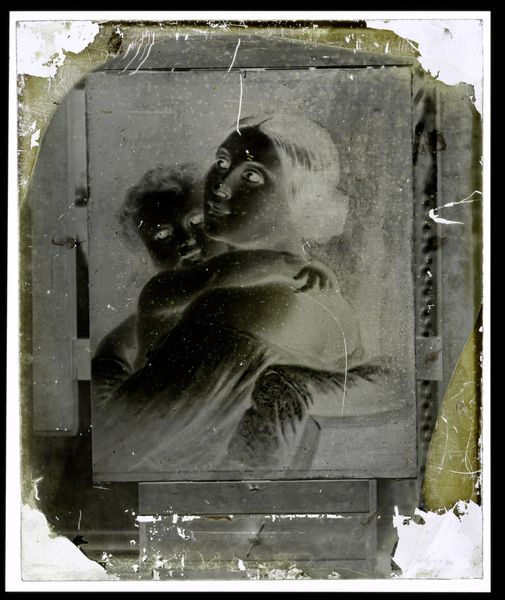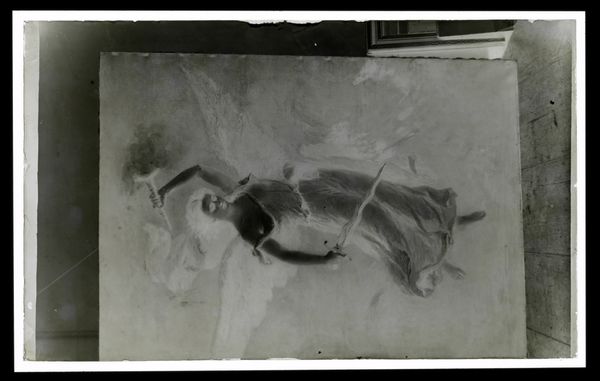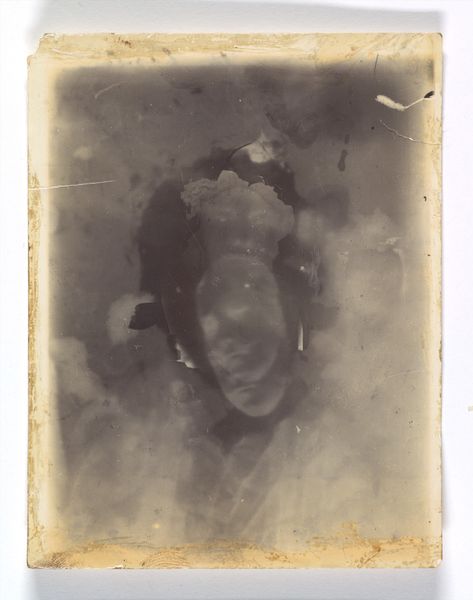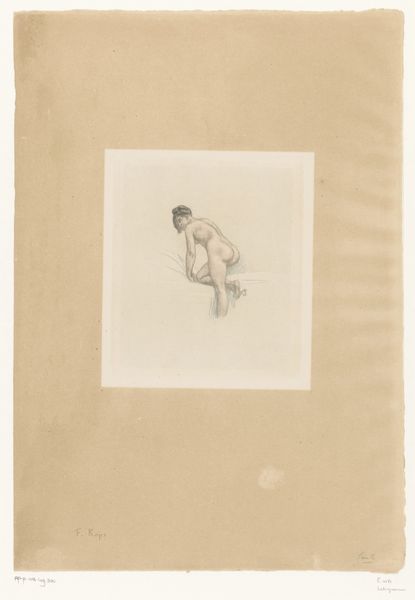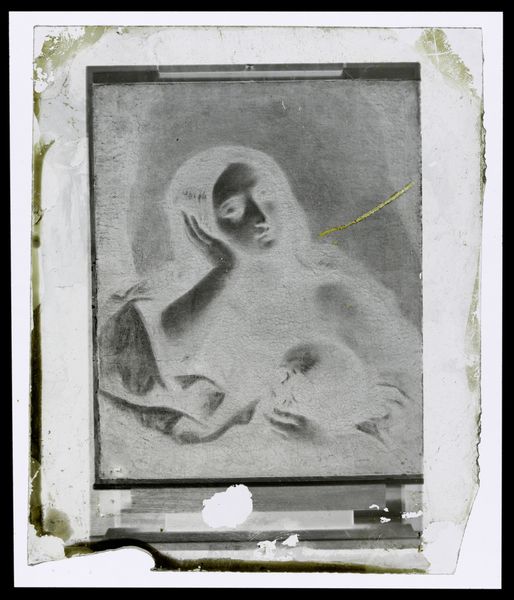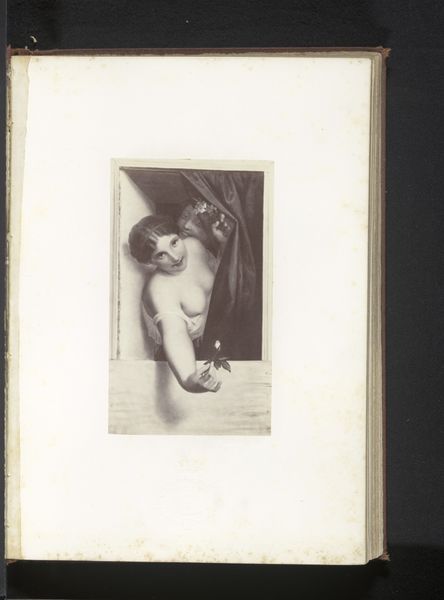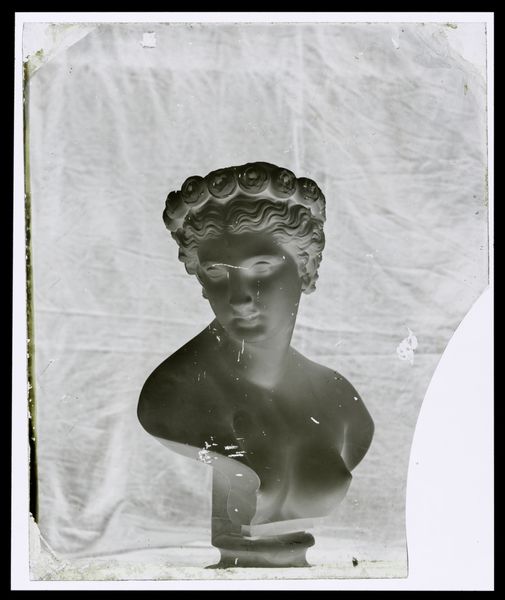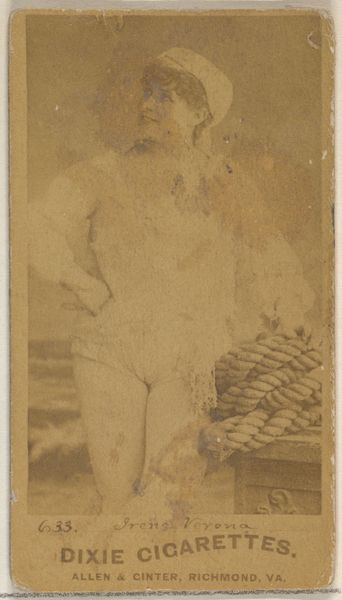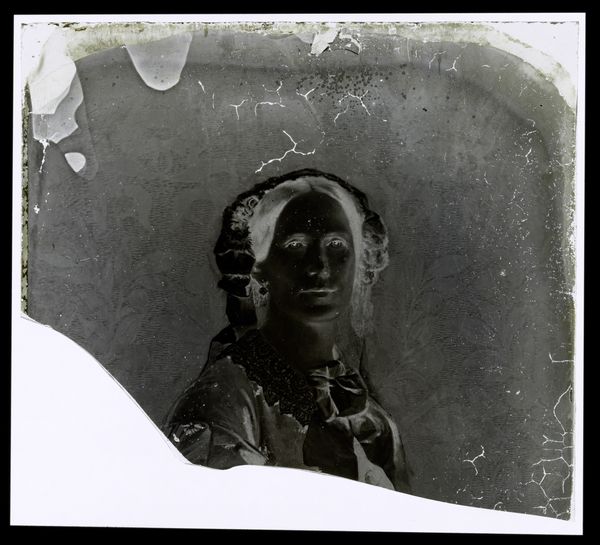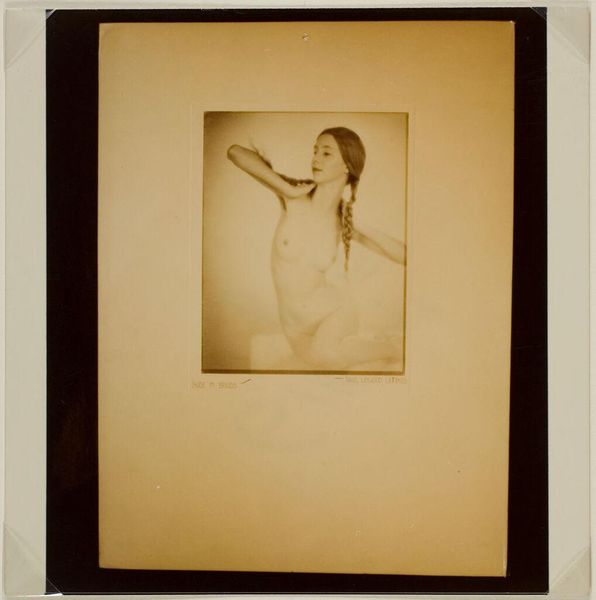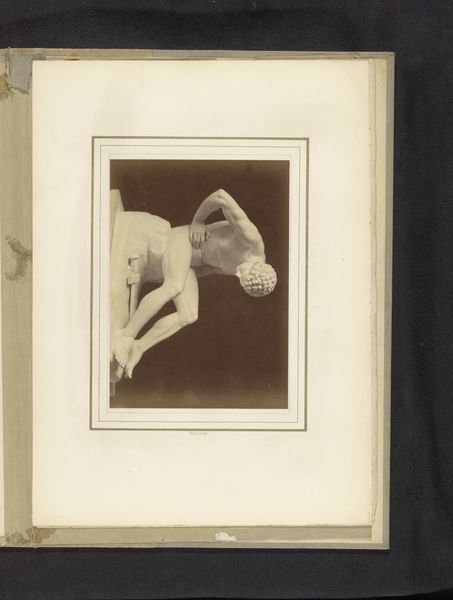
photography
#
portrait
#
muted dark tone
#
photography
#
child
#
framed image
#
home decor
#
framed composition
#
academic-art
#
nude
#
realism
Dimensions: height 182 mm, width 151 mm
Copyright: Rijks Museum: Open Domain
Editor: Here we have an older photographic piece, "Fotoreproductie van een schilderij van een naakt kind," or "Photographic Reproduction of a Painting of a Nude Child," dating from around 1865 to 1900, likely by Laurens Lodewijk Kleijn. It feels… ghostlike, almost, due to the photographic process and subject matter. What strikes you when you look at this? Curator: Immediately, I observe the formal tension between the crisp depiction of the child's figure and the almost ethereal quality of the photographic reproduction. Note how the limited tonal range, the muted dark tones, contributes to a flattened space, pushing the figure towards the surface of the image. The framing, though distressed, emphasizes the pictorial field. Editor: So you are mostly considering the visual arrangement and its impact? Curator: Precisely. The composition compels us to analyze how the figure is presented, its relationship to the background, and the technical processes involved in creating this effect. What do you notice about the child's pose, and how it interacts with the composition as a whole? Editor: I see how the contrapposto pose creates a dynamic line, but is somewhat negated by the faded contrast overall, making the figure slightly difficult to discern distinctly. Curator: Yes, and consider how the technical limitations or even damage to the plate might influence our reading. Is it possible that this distressed effect, while perhaps unintentional, adds to the work’s overall aesthetic impact? What happens to our reading of the artwork’s affect when considering its material qualities, for example? Editor: I suppose I hadn’t thought about the ‘accidental’ effects of the medium. Curator: Indeed. Paying close attention to its inherent, structural elements allows for deeper insight into artistic choices and aesthetic achievements. This artwork provides a case study in such inquiry. Editor: Thanks, I find it so insightful to shift perspective away from what it 'represents', and consider visual elements instead.
Comments
No comments
Be the first to comment and join the conversation on the ultimate creative platform.

